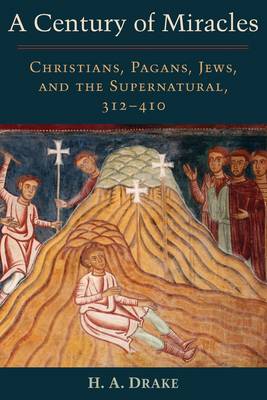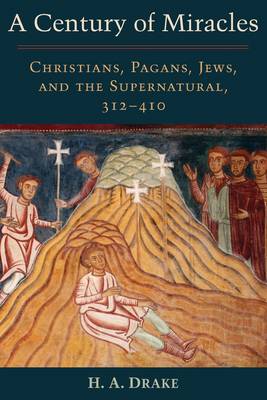
- Afhalen na 1 uur in een winkel met voorraad
- Gratis thuislevering in België vanaf € 30
- Ruim aanbod met 7 miljoen producten
- Afhalen na 1 uur in een winkel met voorraad
- Gratis thuislevering in België vanaf € 30
- Ruim aanbod met 7 miljoen producten
Zoeken
Omschrijving
The fourth century of our common era began and ended with a miracle. Traditionally, in the year 312, the Roman emperor Constantine experienced a "vision of the Cross" that led him to convert to Christianity and to defeat his last rival to the imperial throne; and, in 394, a divine wind carried the emperor Theodosius to victory at the battle of the Frigidus River. In A Century of Miracles, historian H. A. Drake explores the role miracle stories such as these played in helping Christians, pagans, and Jews think about themselves and each other. These stories, he concludes, bolstered Christian belief that their god wanted the empire to be Christian. Most importantly, they help explain how, after a century of trumpeting the power of their god, Christians were able to deal with their failure to protect the city of Rome from a barbarian sack by the Gothic army of Alaric in 410. Thoroughly researched within a wide range of faiths and belief systems, A Century of Miracles provides an absorbing illumination of this complex, polytheistic, and decidedly mystical phenomenon.
Specificaties
Betrokkenen
- Auteur(s):
- Uitgeverij:
Inhoud
- Aantal bladzijden:
- 328
- Taal:
- Engels
Eigenschappen
- Productcode (EAN):
- 9780197541388
- Verschijningsdatum:
- 1/10/2020
- Uitvoering:
- Paperback
- Formaat:
- Trade paperback (VS)
- Afmetingen:
- 137 mm x 208 mm
- Gewicht:
- 385 g

Alleen bij Standaard Boekhandel
+ 115 punten op je klantenkaart van Standaard Boekhandel
Beoordelingen
We publiceren alleen reviews die voldoen aan de voorwaarden voor reviews. Bekijk onze voorwaarden voor reviews.











